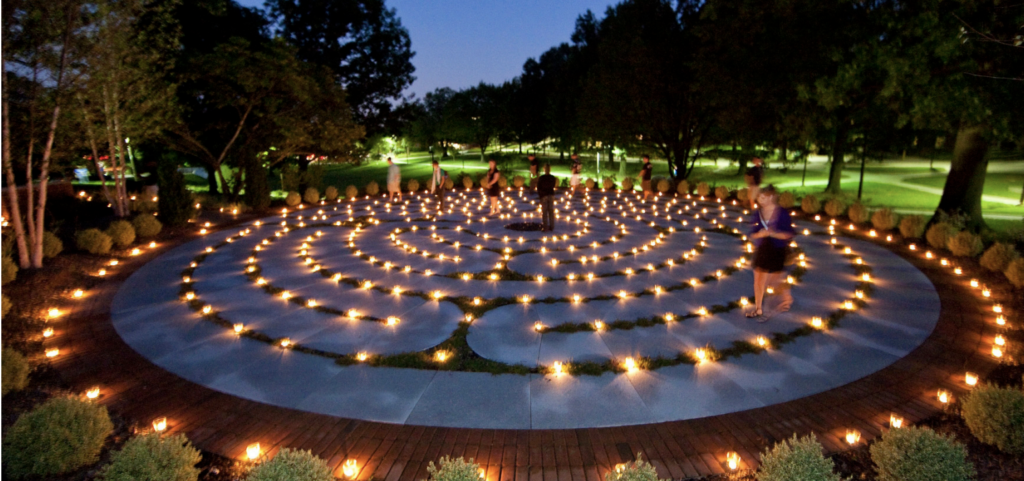Recently, the American Horticultural Society hosted a powerful forum on a very timely topic: “The Garden as Haven: Finding Resilience and Renewal in Turbulent Times”, as part of their annual National Children & Youth Garden Symposium, held at Cornell University.
Beth Tuttle, President and CEO of the American Horticultural Society (AHS), was spurred to cover this topic after a conversation with an AHS member who was seeking consult on helping students regain footing after a mass shooting. The question on the table: How can gardens help students heal, cope and process from acute stressors? Trauma? Devastating natural events? The unfortunate realities of school climate today—climates that are already permeated with staggeringly high student levels of anxiety and depression.
Marsha Guenzler-Stevens—the Firesoul at the University of Maryland’s Sacred Place, was invited to participate as one of the three forum speakers, to share the University’s remarkable story surrounding the origin of its campus garden. And all that has taken place after that.
Every time we hear this story, we’re bowled over by it. The campus was struck by a wave of devastating events in the fall of 2001—one right after the next. A student drug overdose. September the 11th where three students were killed. A freak tornado that took 2 more lives. The students found themselves gravitating to nature, together, to process all that was happening around them.
“They needed to be in each others’ company, but not just in large spaces, but in small, intimate spaces”.
—Marsha Guenzler-Stevens, Ph.D.; Director, University of Maryland; Firesoul
The University of Maryland Sacred Place concept was hatched from here. And since, the garden has taken on a life of its own—serving as a haven for students as they journey into adulthood; navigate stressors, both acute and chronic; and process a chaotic, noisy world around them at a pivotal time in their lives.
In this talk, Marsha brings a certain authenticity through the undeniably credible voices of the students themselves. She shared journal entries captured from the waterproof journals tucked inside the benches—what we call #BenchStories. These are sentiments shared voluntarily, anonymously and spontaneously from garden visitors. No prompts. No incentives. Honest, genuine sentiments sprung from the hearts, minds and spirits of a young student body.
These entries underscore the inherent human need to find comfort, solace and community in a safe space in nature—an innate response known as urgent biophilia. We’re instinctively drawn to green spaces to cope, heal and find greater meaning in the wake of disaster and trauma—to remind ourselves that we are part of a larger system. To reconnect with nature and each other.
A green space or garden, designed for mindful reflection, such as this University of Maryland Sacred Place, is purpose-built to foster this kind of healing—enabling students to reconnect with themselves, each other, and reflect deeply in a way they ordinarily may not.
We invite you to experience these short vignettes below—stories and images of grief, joy, healing and unity—on this university campus.
[ngg_images source=”galleries” container_ids=”67″ display_type=”photocrati-nextgen_basic_thumbnails” override_thumbnail_settings=”0″ thumbnail_width=”240″ thumbnail_height=”160″ thumbnail_crop=”1″ images_per_page=”20″ number_of_columns=”0″ ajax_pagination=”0″ show_all_in_lightbox=”0″ use_imagebrowser_effect=”0″ show_slideshow_link=”1″ slideshow_link_text=”[Show slideshow]” order_by=”sortorder” order_direction=”ASC” returns=”included” maximum_entity_count=”500″]
We encourage you to experience the full AHS forum below—it’s rich with insights, science and further exemplars of nature as a safe haven for students of all ages. For further reading on this topic, the speakers have amassed their recommended readings, all accessible here.

